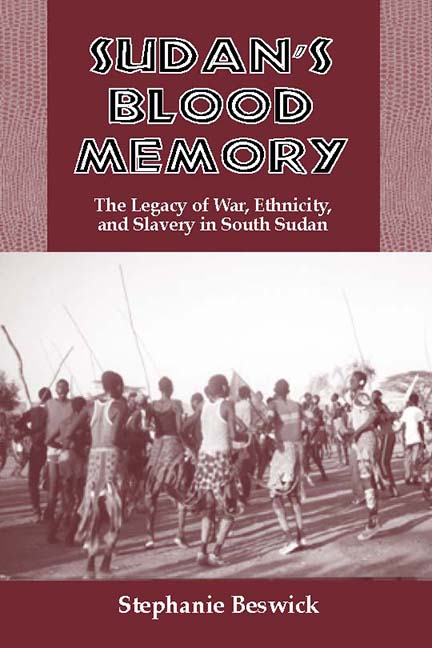Book contents
- Frontmatter
- Dedication
- Contents
- Maps
- Preface
- Acknowledgments
- A Note on Orthography and Languages
- A Note on Sources
- Map
- 1 Introduction
- 2 Geography and Brief History of Sudan
- 3 The Changing Nilotic Frontier
- The Ethno-Historical Formation of Southern Sudan
- The Ascendancy of the Dinka in Southern Sudan
- Foreign Intrusion and Its Consequences
- Notes
- Glossary
- Bibliography
- Index
- Frontmatter
- Dedication
- Contents
- Maps
- Preface
- Acknowledgments
- A Note on Orthography and Languages
- A Note on Sources
- Map
- 1 Introduction
- 2 Geography and Brief History of Sudan
- 3 The Changing Nilotic Frontier
- The Ethno-Historical Formation of Southern Sudan
- The Ascendancy of the Dinka in Southern Sudan
- Foreign Intrusion and Its Consequences
- Notes
- Glossary
- Bibliography
- Index
Summary
Many societies today, worldwide, possess oral histories that reach back many generations. Those that are stateless and fall into the lineage category of society possess even longer memories, particularly for wars and events of great trauma. In this book I have allowed the “voices” or oral histories of numerous peoples—their “blood memories”—to present a precolonial history of Southern Sudan. I also show how certain key themes have continued to dominate from precolonial to modern times.
The older histories of central and northern Sudan have been much studied. Yet, beyond the early nineteenth century, little is known of Southern Sudan. Indeed its inhabitants, who have primarily been stateless, have been deemed to be a people without history. This book begins in the fourteenth century and shows how fierce wars, ethnic struggles and expansion, and external slave raids shaped the sociopolitical and religious culture of the region. For political reasons today, the residents of the geographical region of Southern Sudan, since 1983 have preferred to refer to their homeland as “South Sudan.” For purposes of clarity, therefore, I refer to the region as “Southern Sudan” only when discussing events which pre-date 1983.
I suggest a number of theses in this volume: that the geographic cradleland of East Africa's Nilotic peoples is the central rather than Southern Sudan; that this Nilotic frontier has been shifting southwards for centuries; and that the Western Nilotic Dinka were the last of the Nilotes to migrate out of the central Sudan into Southern Sudan. Since this time, the northern frontier of the Western Nilotes has historically been a boundary of stress and predation in the remembered history of many in the region. As they migrated into Southern Sudan the Dinka introduced a hardier variety of cattle and sorghum into the region. In time they underwent massive ethnic expansion (by marriage), coming to geographically dominate much of the central Southern region. Their routes of migration, however, were often dictated by soil types and water availability. The Western Nilotes, and particularly the Dinka, relied heavily on their religion, a communal and Olympian type of belief system that suggests they were in close contact with the ancient central Sudan kingdoms of the Nile. I further suggest that slave raids into what is now the Southern Sudan began in the latter eighteenth century and not in the nineteenth, as has been previously argued.
- Type
- Chapter
- Information
- Sudan's Blood Memory , pp. 1 - 8Publisher: Boydell & BrewerPrint publication year: 2004

